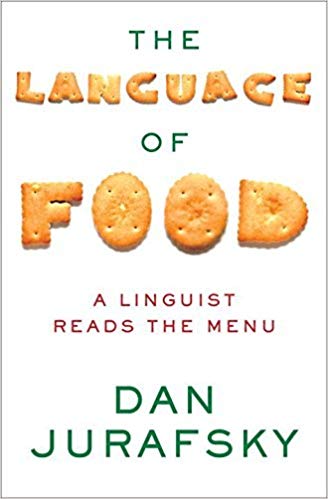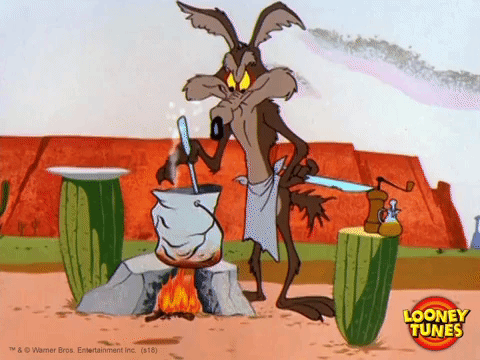The Language of Food by Dan Jurafsky
 The Language of Food A Linguist Reads the Menu
The Language of Food A Linguist Reads the Menu
by Dan Jurafsky
Fellow foodie friends loaned me this book. We share a love of cookbooks, cooking and seeking out new foods — but they touted it as a completely different type of food book ~~ The Language of Food is just that – like nothing you’ve ever read.
Written by a professor of linguistics and computer science at Stanford University, Mr. Jurafsky (and his team) devoted many (many) hours exploring the origin of food terminology — from food names to the nuances of menu writing — and happily melded it all with computerized linguistic tools to evolve the genesis of this book.
Whoa, I first thought — way above my mental pay grade, but I was instantly fascinated by the introduction, in which the author explains his fascination with food linguists and how it involves the science, history, and culture of many regions. He explains the origin of ‘ketchup’ which derives from a pungent Chinese fermented fish sauce pronounced ke-tchup in Cantonese. This sauce was brought back to Europe by English and Dutch explorers and evolved over 400 years to suit Western tastes and become today’s ubiquitous tomato based condiment. Macaroni descends from a Persian almond pastry which intermingled with the pastas of the Arabs to become pasta. And toasts at weddings historically involved toasted bread.
The first chapter of The Language of Food is devoted to menus and their language. You will both chuckle and be struck at restaurant menu manipulation Back in the 1970’s the use of French denoted expensive and swanky meals – such as ‘Fried Chicken a la Maryland’ or ‘Ravioli en casserole’. Today fancy restaurants do the same thing with often ridiculous descriptions of the origins of the food — grass fed, pasture raised, green market cucumbers (this is especially rampant here on the West Coast and was lampooned in a very funny episode on Portlandia — watch clip HERE.)
But I digress…
Restaurant price points are so ingrained in their menu language that we’re not even aware of it (at least it never occurred to me before). Expensive restaurants use ‘chefs daily selection’ or set prix-fixe menus. In contrast, cheaper places give the diner a lot of choice – not only do they have far more dishes, they also prepare meals to your liking ‘prepared your way’. In fact Mr. Jurafsky points out that the words ‘you’ and ‘your’ appear much more often in cheaper restaurants. And what about middle-priced places? — well they tend to use lots of adjectives such as this mouth watering description of an apple pie:
Rustic Apple Galettte: Hand crafted tart in five inches of butter flaky french puff pastry. We layer fresh ripe apples and bake to a golden brown.
I’ll leave this menu chapter now, but not before I point you to something mentioned which I almost missed – the NY Public Library Menu Collection. I had great fun wasting time one rainy evening. Just take a look and click on some of these wonderful old menus that have been digitally preserved – such as from ocean liners back in the early 1900’s or you can enter a favorite restaurant from your memory and there it is. Such fun.
Okay back to the book.
Sex, Drugs, and Sushi Rolls is an eye-opening chapter on the power of language in restaurant reviews – and how reviewers often use words connected to sex or drugs to hype — such as ‘the chicken wings are addicting’ or ‘the ice cream pastry was just orgasmic’. Perhaps most interesting was the scientist’s investigation into often rigged on-line reviews (such as Yelp) which can sadly bring down a perfectly good restaurant.
In other chapters, you’ll get to read about junk food marketing and how advertising copy got us to crave potato chips and kettle corn at festivals. You’ll learn why the Chinese don’t have dessert and how today’s group cooking/dinner parties evolved from cooking clubs in a mouth watering region in Basque.
I think it comes with the territory, that a food linguist/computer scientist can and will get pedantic. So I must admit I didn’t entirely get through each and every chapter, but I did read quite a bit more of this book than I originally thought I would – (see Mental Pay Grade above…)
The Language of Food is sometimes geeky but more often actually quite fascinating, and I applaud Mr. Jurafsky for devoting so much effort to bring us such delightful insight into the language, history, culture and origins of our food and eating experiences.
I’m off to make our dinner and it’s definitely going to be chefs choice…. 





